SPORT
RUGBY
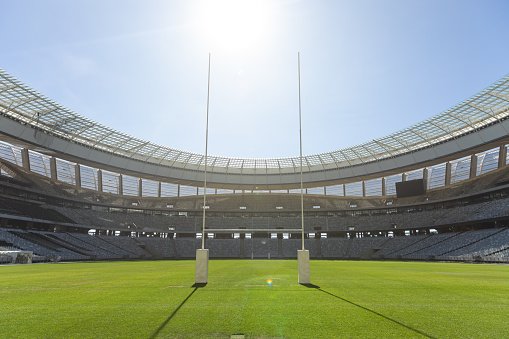
Rugby is said to have originated at Rugby School in Warwickshire, England in 1823 when during a game of football/soccer, William Webb Ellis decided to pick up a ball and go with it. the World Rugby Trophy is now named after William Webb Ellis.
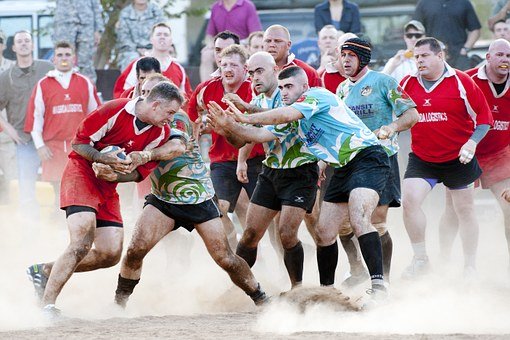
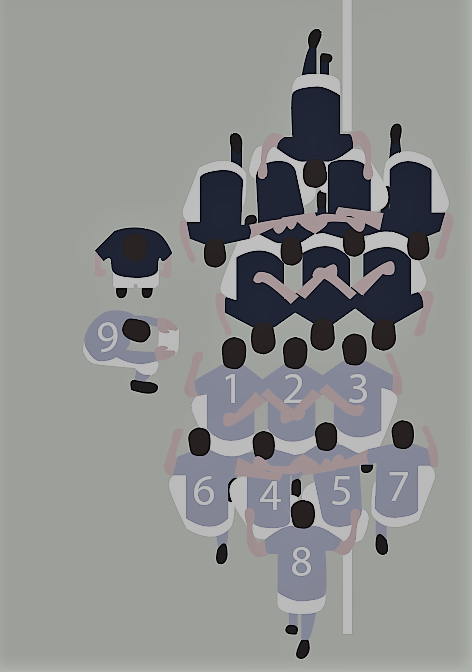
One way to easily understand the sport is to zoom in each individual position in field of play.
1 & 3 are called Prop a loose head and a tight-head
2 Hooker
*The combination of 1, 2 & 3 will give use the front row
4 & 5 these players are Locks or the Second Row
6 & 7 Flanker / Wing Forward. Open-side and Blind-side
8 Number Eight (eighth man)
*The combination of 6, 7 & 8 will be the Back Row
9 Scrum-Half
*Combination of position 1, 2, 3, 4, 5, 6, 7, 8 & 9 is called the Forwards, Forward Pack or the Scrum
10 Fly-Half
11 & 14 Wing or Left and Right Wing
12 & 13 Centre. Inside Centre/ 1st Centre then Outside Centre/ 2nd Centre
15 Full-back
*Combining positional players 10, 11, 12, 13, 14 & 15 will be the Backline, Backs or the Line
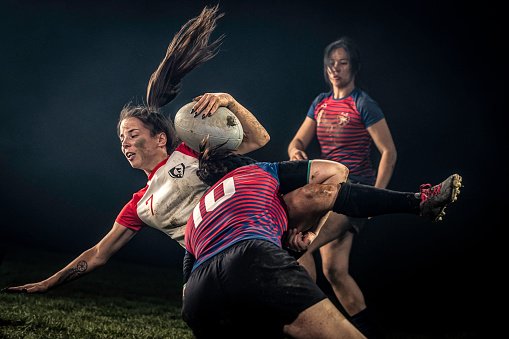
Probably one of the most liked aspect of rugby is the tackle. Only the ball carrier can be tackled by an opposing player. A tackle occurs when the ball carrier is held by one or more opponents and is bought to ground, i.e. has one or both knees on the ground, is sitting on the ground or is on top of another player who is on the ground. If it's an impact tackle the tackle should be from the waist area and downwards for the safety of the tackled player else it's a high tackle offense. To maintain the continuity of the game, the ball carrier must release the ball immediately after the tackle, the tackler must release the ball carrier and both players must roll away from the ball. This allows other players to come in and contest for the ball, thereby starting a new phase of play.
.jpg)
A ruck is formed if the ball is on the ground and one or more players from each team who are on their feet close around it.Players must not handle the ball in the ruck and must use their feet to move the ball or drive over it so that it emerges at the team's hindmost foot, at which point it can be picked up.
A maul occurs when the carrier is held by one or more opponents and one more of the ball carrier's team mates holds on (binds) as well (a maul therefore needs a minimum of three players). The ball must be off the ground. The team in possession of the ball can attempt to gain territory by driving opponents back toward the opponent's goal line. the ball can then be passed backwards between players in the maul and eventually passed to a player who is not in the maul, or a player can leave the maul carrying the ball and run with it.
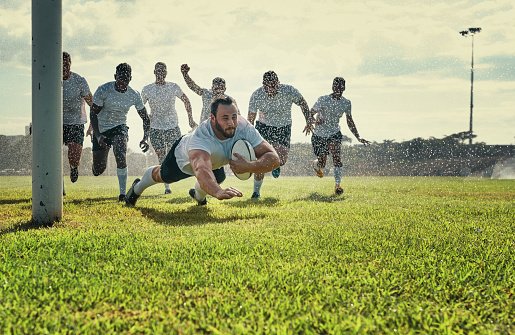
A try is worth 5 points and is scored when the ball is grounded over the opponent's goal line in the goal area. A penalty try can be awarded if a player would have scored a try but for foul play by the opposition. A conversion is worth 2 points. After scoring a try, that team can attempt to add two further points by kicking the ball over the crossbar and between the posts from a place in line with where the try was scored. Penalty is worth 3 points. When awarded a penalty after an infringement by the opposition, a team may choose to kick at goal. A drop goal is worth 3 points. A drop goal is scored when a player kicks for goal in open play by dropping the ball onto the ground and kicking it on the half-volley.

The lineout is a means of restarting play after the ball has gone into touch (off the field of play at the side). The lineout concentrates a selection of forwards in one place near to the touch line, so the backs have the rest of the field in which to mount an attack. The key for the forward is to win possession and distribute the ball effectively to the back line. The forwards assemble in two lines, perpendicular to the touch line, one metre apart. The hooker throws the ball down the corridor between these two lines of players. Because the thrower's team mates know where the throw is likely to go, that team has an advantage in retaining possession. However with speed of thought and movement, the opposition can contest for the ball and frequently results in a turnover of possession. The player who successfully catches the ball can keep it and set up a maul, or can pass to the receiver (a player who stands next to the lineout to wait for such a pass) who then passes to the fly half and on to the backline. To allow players to catch high throws in the lineout it is permissible for the catcher to be supported by team mates while jumping to catch the ball. Safety is a prime concern here and any player who is off the ground must be supported until that player returns to the ground. A player may not be tackled while in the air and holding, shoving or levering on an opponent are all offences punishable.
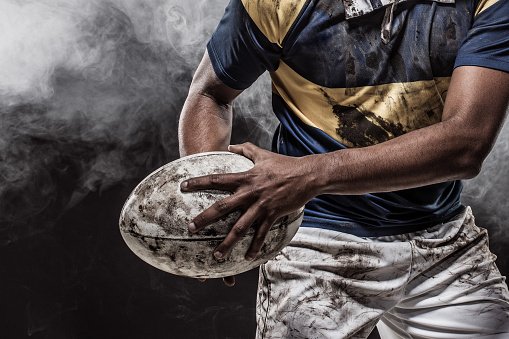
The source of endless debate, controversy and acclaim alike, developing the right tactics can make or break a team's performance. Far from an easy proposition, but get it right and you're the world's greatest Rugby visionary, to your players, at least. Developing tactics requires a thorough understanding of your team's strengths. These tactics will be in part forward dominated and power based and also reliant on the creation of space and use of pace. As important, is an awareness of the team and individuals you're up against and the tactics they are likely to employ.
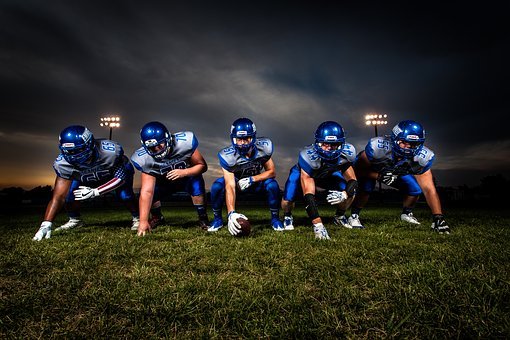
American football
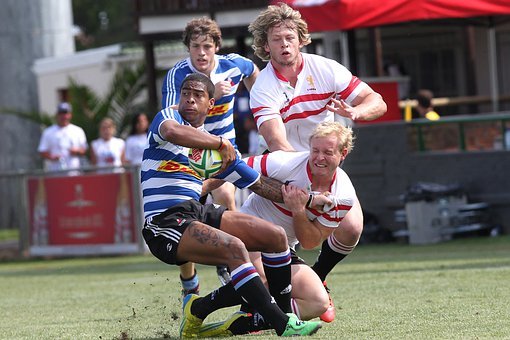
Rugby
American football and rugby are in many ways similar sports, both featuring a great amount of physicality, running and aggression. This is not unsurprising when you realise that American football and rugby are related, with American football developing from rugby in the 19th century. However, their are some fundamental differences between the games. Although American football is played in many different countries across the world, by far the most players are in the USA. Rugby however has a far bigger geographical spread. Rugby is popular in European countries such as England, Scotland, Ireland, Wales, Italy and France as well as southern hemisphere countries such as Australia, New Zealand, South Africa and Argentina. It is also one of the fast growing team sports in the USA.The object of American football is to score more points than the opposition team by carrying the ball behind the opponents touch line (called a touchdown). Teams can also score points by kicking the ball between the post which is known as a field goal. The object of rugby is very similar, but the ball must be carried behind the opponents touch line and then, placed down which is called a try. Points can also be scored by kicking the ball between the goalpost (known as a conversion/drop goal/penalty kick) depending upon the circumstances. American football and rugby balls look similar at first glance but they are different. Rugby balls are about 27cm long and weigh about 1 lb whereas American footballs weigh a few ounces less but are slightly longer at 28cm. American footballs also feature more pointy end and seam, both of which make it easier to throw. Rugby teams are much larger than American football counterparts. Rugby teams have fifteen players on the pitch at any one time whereas American football teams have just eleven. In rugby, teams are allowed to make up to seven substitutions in a game (dependent upon specific league/ tournament rules) and once a player has left the pitch, they cannot return to the field of play except if there is an injury and there are no other substitutes available. Ameriacan football teams have transitional teams defensive and offensive combinations and rugby has no such system. Rugby players play with minimal protective equipment, most playing only with a gum-shield. In American football however a large amount of equipment is worn including a helmet, shoulder and chest pads, leg protectors, in addition to the gum-shield. These are not optional and must be worn by all players. Both American football and rugby are games that feature a huge amount of physical and are physically demanding to play. Impact in American football can often be heavier thanks to the amount of protective equipment worn. However rugby players make many more tackles than their American counterparts, averaging sixteen per game compared to American football's average of just four.
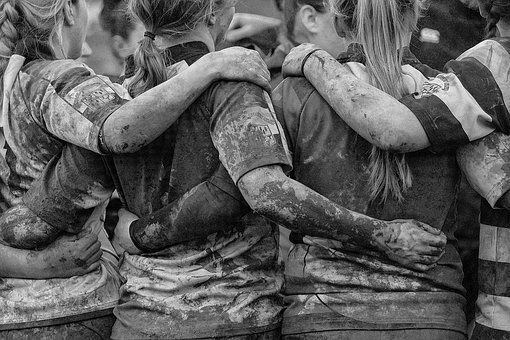
A sport for the fit